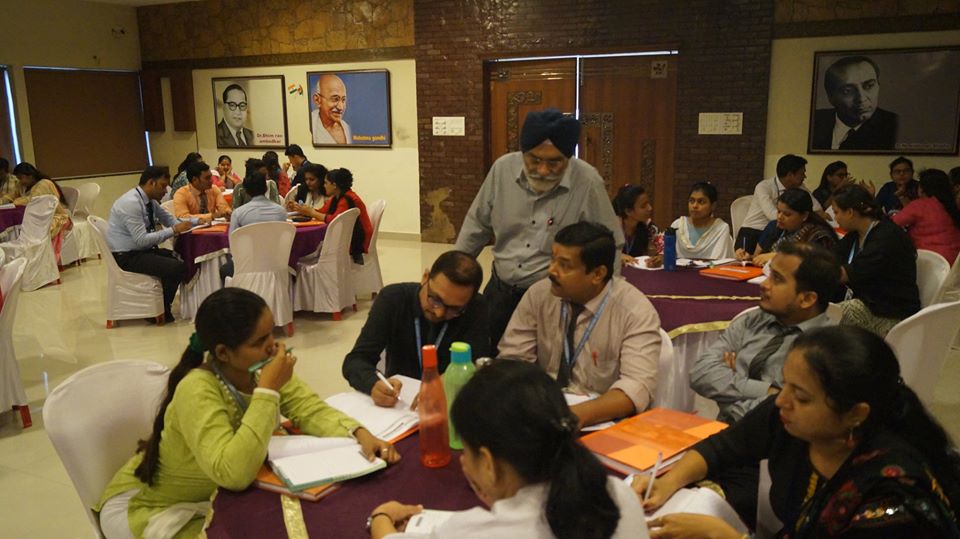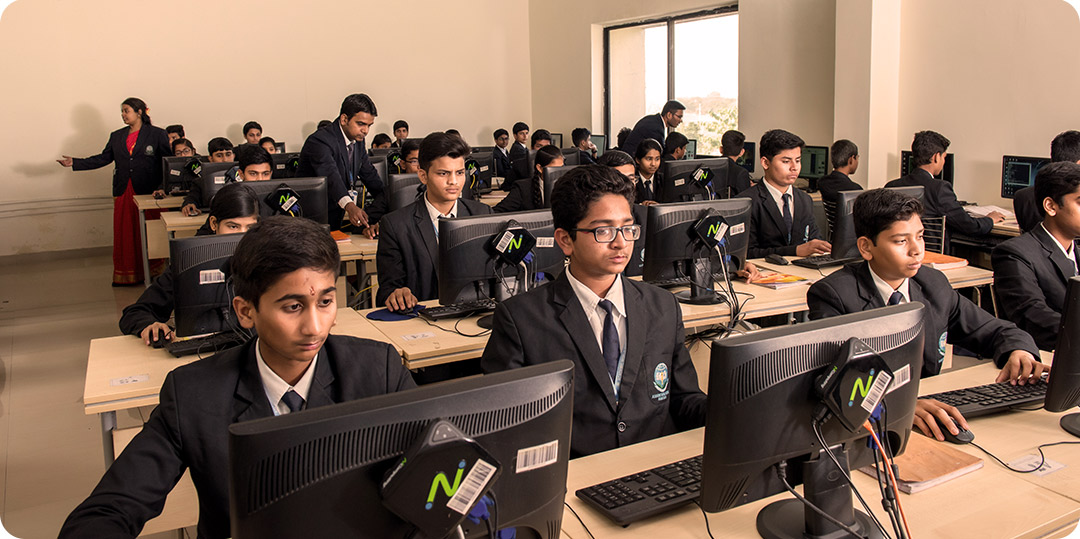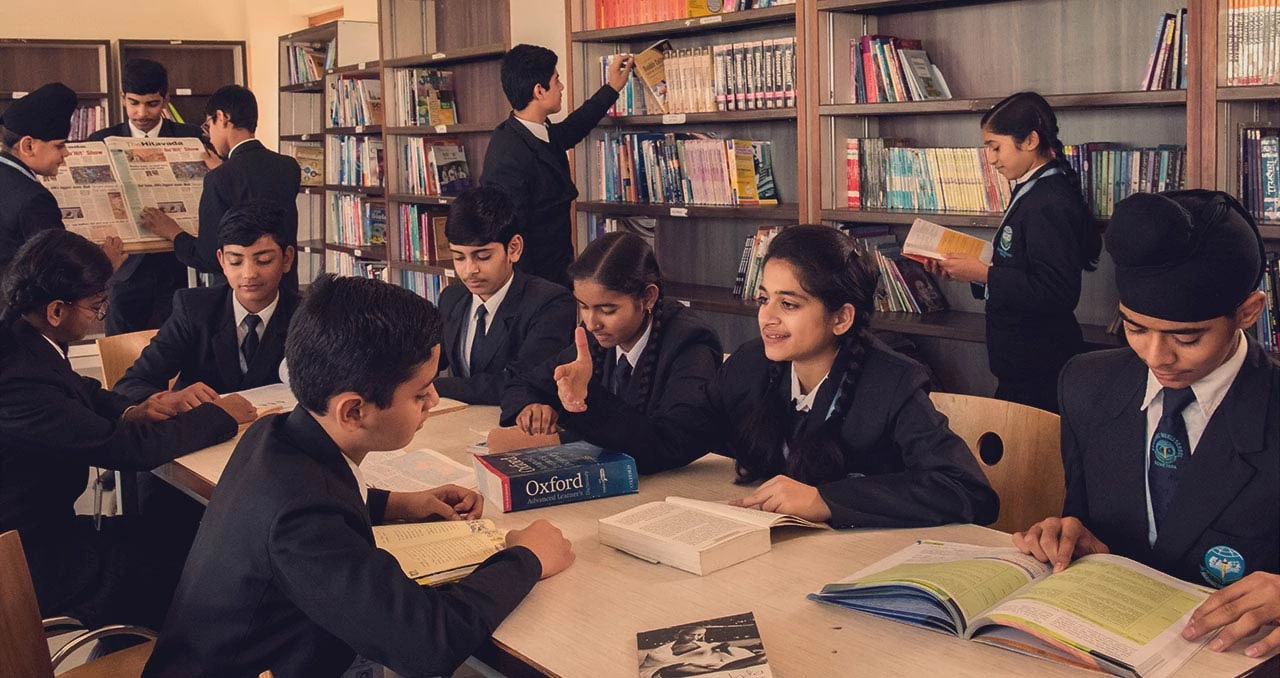Technology is now the fourth industrial revolution. Today, education is mobile, and the line between work and home is blurred. Education and training in the corporate world have been completely transforming by online learning. Meanwhile, the education sector has been trying to adapt to these shifts, bringing unique challenges along. Throughout Chhattisgarh, CBSE Schools have been focusing on the digitization of education for effective learning among students.
With Covid-19, distance education and online learning saw increased popularity, raising questions concerning their differences. The education cannot end, even if it is interrupted for a time. Digital means of education and training are replacing face-to-face instruction in schools, colleges, and universities. Virtual classrooms remain open, however, to continue spreading knowledge. Classroom and online learning could both have the same primary objective; however, both modes of instruction have some distinct differences.

Classroom learning differs significantly from online learning in the following ways:
- The two-way vs. the one-way communication:
Teachers who use classroom learning setups have the advantage of being able to establish two-way communication with their students since both students and teachers are physically present inside the classroom.
When it comes to two-way communications, it is sometimes challenging to maintain them, and this is often due to a variety of factors, such as limitations on both ends of the internet, low connectivity, technical device issues, etc. Online learning does not provide immediate feedback and students tend to be more involved in conventional classrooms.
- Sense of Isolation
By being in the company of others, students can learn a great deal. Students can work independently in some cases, but others find comfort in their community on campus with easy access to professors. The interaction between students and instructors in an online course is minimal. Often, this results in students feeling isolated.

- Human Touch
The most significant difference is the lack of human interaction. A teacher can provide on-the-spot help aside from the course curriculum when they are in the classroom but online mode lacks this facility. In addition to developing communication skills, group study also has a positive effect on learning for children. Students have the opportunity to clear out their doubts almost immediately in a classroom.
There are causes of discomfort for some online students when taking an online course. When you study alone with only your computer as a companion, it can be terrifying. Online, therefore, is quite a different environment, so getting used to it can be difficult.
- There is little practice-based learning
It is common for online learning to be theoretical and lacking in practice. Theory refers to facts, concepts, and reasoning, whereas practice refers to hands-on efforts and tasks. For example, a great way to learn the theoretical side of football, such as the history of the sport and its rules, is through online learning. The method is not reliable for transferring practical knowledge, such as the basics of playing a game. To get that done, you have to get out on the field. The value of hands-on experience cannot be replaced by e-learning. Comparatively to other CBSE schools in Chhattisgarh, Academic World School is the best because of its sensible curriculum and course structure and its availability of handy study materials and class notes provides its students both theoretical and practical knowledge that helps them to generate a great future.
- Digital Connectivity
Online learning is usually associated with technical problems. Audio, video, and connection issues are the most common causes of interruptions in an online class. Moreover, in particularly static online courses, all the content is uploaded on one server for the student’s open access, without actual human interaction. When we need live clarification, technical support, or real-time adjustments, this can be a problem.
Classroom learning does not depend on technology, but the primary requirement for e-learning is a seamless online interface. Rural Indians face challenges such as a lack of internet connectivity and limited access to smartphones and laptops. Especially in the interior of India, where digital technology is still scarce, classroom learning is the best choice. Adapting to world-class standards, AWS has always strived to be the best school in Chhattisgarh that will help get your child ready for the real world.

- Discipline and deadlines
With virtual learning, you have more freedom. Taking your time and learning at your own pace is possible. Lectures can take place whenever you are free, and exams can happen whenever you feel prepared. Ultimately, each discipline and deadline is in your hands, and you are ultimately responsible for the course’s success. The absence of a deadline or a fixed schedule can often adversely affect the learning process and is not advisable for young students.
In the hands of children, evaluating a course’s relevance is difficult. Having a fixed schedule, a classroom routine, and deadlines for submitting homework help a young mind grow.
Online learning has increased significantly in recent years. Several factors influence a person’s growth and development, and learning is an integral component. To compare online and classroom learning unbiasedly, it is vital to look beyond just usage and adoption numbers. Through our affiliation with AWS, we guarantee the best quality service to your child and make him as comfortable as possible with a mixture of offline and online classroom environments.
Virtual Classes have been unavoidable due to the pandemic, but we’ve aligned all of our resources to continue learning. When Online Education operates in a vast space like the internet, cynicism is natural and inevitable. In the digital era we’re entering, it has more pros than cons. The technology we employ right now is a vital component of our current phase.
We are one of the best CBSE schools in Chhattisgarh because Academic World School is always looking for new ways for its students to learn in a traditional environment and at the same time use modern technological advancements.